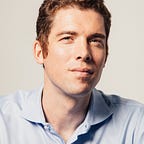End Times
The Morning We Learned How to Destroy the World
Seventy-four years after the end of World War II, we’re still living with the existential risk of nuclear holocaust — and it all began on a patch of desert called the Trinity Site
Asteroids, supervolcanoes, nuclear war, climate change, engineered viruses, artificial intelligence, and even aliens — the end may be closer than you think. For the next two weeks, OneZero will be featuring essays drawn from editor Bryan Walsh’s forthcoming book End Times: A Brief Guide to the End of the World, which hits shelves on August 27 and is available for pre-order now, as well as pieces by other experts in the burgeoning field of existential risk. But we’re not helpless. It’s up to us to postpone the apocalypse.
 The chief asset of a missile range is its emptiness. At maximum size — its dimensions shrink and grow like a shadow depending on what its owners the U.S. Army is testing on a given day — the White Sands Missile Range in central New Mexico covers about as much land as the state of Connecticut. Nearly all of it is vacant, devoid of buildings or roads or even the few animals that live in the flat, dry scrub the Spanish called the Jornada del Muerto, the Journey of Death. It’s a name that…
The chief asset of a missile range is its emptiness. At maximum size — its dimensions shrink and grow like a shadow depending on what its owners the U.S. Army is testing on a given day — the White Sands Missile Range in central New Mexico covers about as much land as the state of Connecticut. Nearly all of it is vacant, devoid of buildings or roads or even the few animals that live in the flat, dry scrub the Spanish called the Jornada del Muerto, the Journey of Death. It’s a name that…
